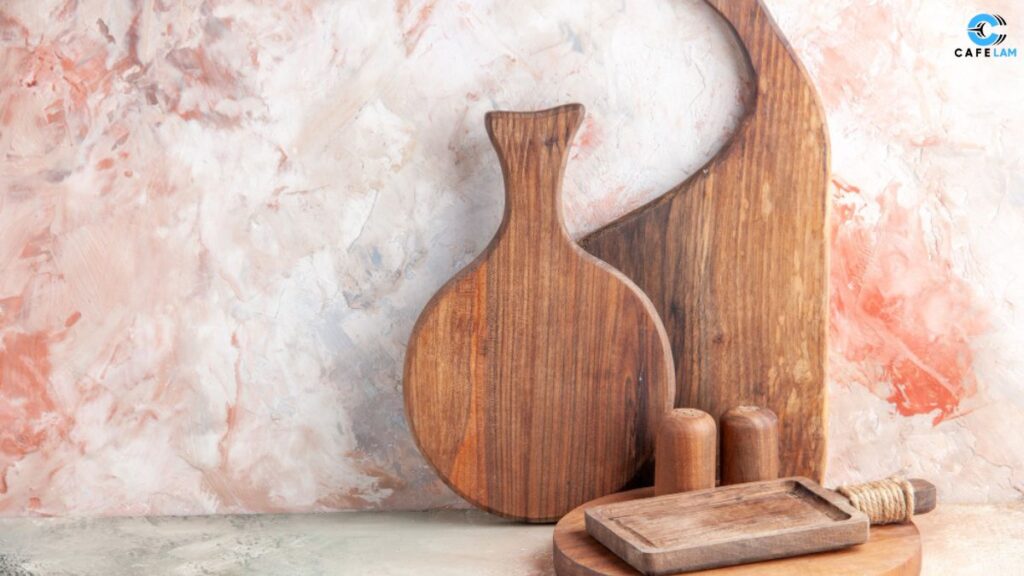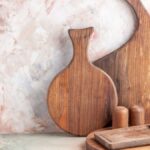In homes across the world, the kitchen is more than just a place to prepare meals—it’s a heart of the home, filled with memories, aromas, and tools that have stood the test of time. Among these enduring kitchen staples, few items carry the quiet dignity and rich history of antique bread boards. These aren’t just cutting surfaces; they are pieces of history, crafted by hand, shaped by years of use, and often passed down through generations. Whether you’re a collector, a cooking enthusiast, or someone who appreciates the beauty of vintage items, antique bread boards offer a unique blend of function, artistry, and nostalgia.
The Origins and Evolution of Bread Boards
Long before modern countertops and plastic cutting boards, people relied on sturdy wooden slabs to slice bread and prepare food. The earliest versions of bread boards date back centuries, with evidence suggesting their use in ancient civilizations such as Egypt and Rome. These early boards were typically made from locally available hardwoods and were essential in every household. Over time, as craftsmanship improved and woodworking techniques evolved, bread boards became more refined, featuring smoother finishes, decorative carvings, and even built-in juice grooves.
By the 18th and 19th centuries, bread boards had become common in European and American kitchens. They were often handmade by local carpenters or even crafted within the home using tools passed down through families. This era saw the rise of more durable and aesthetically pleasing designs, with woods like maple, beech, and walnut being favored for their strength and resistance to knife marks. It’s from this period that many of today’s most sought-after antique bread boards originate.
Why Antique Bread Boards Are Still Cherished Today
So, what makes antique bread boards so special in today’s modern world? For one, they represent a time when items were built to last. Unlike mass-produced plastic or composite boards, these vintage pieces were made with care, attention to detail, and high-quality materials. Each board tells a story—of the hands that shaped it, the meals it helped prepare, and the family that used it.
Moreover, antique bread boards are naturally antimicrobial. Wood has a unique ability to absorb moisture and then release it, which helps prevent the growth of bacteria. Studies have shown that wooden cutting boards, especially well-maintained ones, can be more hygienic than plastic alternatives. This scientific backing, combined with their timeless appeal, makes antique bread boards not only beautiful but also practical for everyday use.
Another reason for their popularity is the growing interest in sustainable living. As more people look to reduce plastic use and embrace eco-friendly kitchenware, vintage wooden boards offer a perfect solution. They are biodegradable, renewable, and often come with a history that adds emotional value to their function.
Identifying Genuine Antique Bread Boards
With the rising demand for vintage kitchenware, it’s important to know how to identify a true antique bread board. Not every old-looking wooden board is an authentic piece from the past. Here are some key characteristics to look for:
First, examine the wood. Genuine antique bread boards are usually made from solid hardwoods like maple, oak, or walnut. These woods are dense and durable, capable of withstanding decades of use. Look for signs of natural aging, such as darkened grain, minor cracks, or a smooth, worn surface that comes from years of handling.
Second, check the construction. Most antique boards were made from a single piece of wood or joined planks using traditional woodworking techniques like dovetailing or mortise and tenon joints. Avoid boards with modern screws, metal brackets, or synthetic adhesives, as these are signs of more recent manufacturing.
Third, look for tool marks. Hand-planed surfaces, chisel grooves, or uneven edges can indicate that the board was made before the widespread use of power tools—typically before the early 20th century. These imperfections are not flaws; they are proof of authenticity and craftsmanship.
Finally, consider the size and shape. Older bread boards were often larger and heavier than modern ones, designed to handle whole loaves of homemade bread. Some even feature handles, juice grooves, or carved patterns that reflect regional styles.
Common Types of Antique Bread Boards
While all antique bread boards share a common purpose, they come in a variety of styles and designs based on their origin and era. Here are a few notable types you might encounter:
- Farmhouse Boards – These are large, thick boards commonly used in rural homes. Made from sturdy oak or maple, they often have a simple, utilitarian design with rounded corners and a smooth surface.
- Butcher’s Blocks – Though technically different from bread boards, many antique butcher blocks are used interchangeably today. These are typically thicker, with end-grain construction that’s gentle on knife blades.
- Folding Boards – Popular in the 19th century, these boards could be folded in half for easy storage. Some even had compartments for holding knives or small utensils.
- Decorative Boards – Found in wealthier households, these boards were often intricately carved with floral patterns, family crests, or religious symbols. They were as much a display piece as a functional tool.
- Tray-Style Boards – These feature raised edges or built-in handles, making them ideal for serving bread or cheese. Some even have small drawers or compartments underneath.
Each of these types offers a glimpse into the lifestyle and values of the time in which they were made. Whether simple or ornate, they all reflect a deep respect for craftsmanship and home cooking.
Caring for Your Antique Bread Board
Owning an antique bread board is a privilege, but it also comes with responsibility. Proper care ensures that your board remains functional and beautiful for years to come. Here’s a step-by-step guide to maintaining your vintage treasure:
Start by cleaning the board after each use. Use a damp cloth and mild soap—never submerge it in water or put it in the dishwasher. Excess moisture can cause warping or cracking. After washing, dry it immediately with a clean towel and let it air dry upright to allow airflow on both sides.
To keep the wood nourished and protected, apply food-grade mineral oil every few weeks. This helps prevent drying and maintains the board’s natural luster. Avoid using vegetable oils, as they can turn rancid over time. Simply pour a small amount of mineral oil onto a soft cloth and rub it into the surface in the direction of the grain. Let it soak in for a few hours, then wipe off any excess.
If your board develops a strong odor or shows signs of staining, you can refresh it with a mixture of coarse salt and lemon juice. Sprinkle salt over the surface, squeeze fresh lemon juice on top, and scrub gently with a sponge or cloth. The acidity of the lemon helps neutralize odors, while the salt acts as a mild abrasive. Rinse thoroughly and dry completely.
For deeper scratches or minor damage, light sanding with fine-grit sandpaper can help restore the surface. Always sand in the direction of the grain to avoid further damage. After sanding, reapply mineral oil to seal the wood.
With regular care, your antique bread board can remain a trusted kitchen companion for decades.
If you want to read more, visit our blog page. We have more topics!
The Value of Antique Bread Boards
The value of an antique bread board can vary widely depending on several factors. Age, condition, craftsmanship, wood type, and provenance all play a role in determining worth. A well-preserved 19th-century maple board with hand-carved details might fetch several hundred dollars at auction, while a simpler 20th-century piece in good condition could sell for $50 to $150.
Collectors often seek out boards with unique features, such as maker’s marks, family inscriptions, or regional designs. Boards from specific countries—like French, German, or Scandinavian pieces—are particularly prized for their distinctive styles and high-quality materials.
To get a better idea of value, here’s a simple table outlining average price ranges based on condition and origin:
|
Excellent
|
$100–$250
|
$150–$400
|
$400–$800+
|
|
Good
|
$50–$100
|
$80–$200
|
$200–$500
|
|
Fair
|
$20–$50
|
$40–$100
|
$100–$250
|
Keep in mind that rarity and historical significance can greatly increase a board’s value. A board that once belonged to a famous chef or was used in a historic home might be worth far more than its physical condition suggests.
Where to Find Antique Bread Boards
If you’re eager to start your own collection or find the perfect vintage board for your kitchen, there are several places to look. Antique stores, flea markets, and estate sales are excellent starting points. These venues often carry unique, one-of-a-kind pieces that you won’t find in regular retail stores.
Online marketplaces like eBay, Etsy, and specialized antique websites also offer a wide selection of antique bread boards. When buying online, be sure to read descriptions carefully, ask for additional photos, and verify the seller’s reputation. Look for boards with clear provenance and detailed condition reports.
Another great option is joining collector communities or forums. These groups often share tips, trade pieces, and provide valuable insights into identifying and valuing antique kitchenware. Some collectors even specialize in wooden kitchen tools, making them a wealth of knowledge.
Final Thoughts
Antique bread boards are more than just kitchen tools—they are living pieces of history, connecting us to the past through their craftsmanship, function, and charm. Whether displayed on a wall as art, used daily for slicing bread, or passed down as a family heirloom, these boards carry a legacy of home, hearth, and handmade beauty.
In a world of fast-paced living and disposable goods, owning an antique bread board is a small but meaningful way to slow down, appreciate quality, and honor the traditions of the past. So the next time you see a worn wooden board at a flea market or tucked away in a relative’s attic, take a closer look. You might just be holding a piece of history worth far more than its weight in wood.
Whether you’re a seasoned collector or simply someone who loves the warmth of vintage kitchenware, antique bread boards offer a timeless blend of utility and heritage. With proper care and appreciation, they can continue to serve—and inspire—for generations to come.
Frequently Asked Questions (FAQs)
Q: Can I use an antique bread board for cutting food today?
Yes, absolutely. As long as the board is in good condition and properly maintained, it’s perfectly safe to use. Just be sure to clean it thoroughly after each use and avoid cutting raw meat on it unless you’re willing to deep-clean it afterward.
Q: How can I tell if a bread board is truly antique?
Look for signs of handcrafting, such as tool marks, natural wood aging, and traditional joinery. Boards made before the 1950s are more likely to be genuine antiques. If in doubt, consult an antique appraiser.
Q: Are antique bread boards safe from bacteria?
Yes, wood has natural antibacterial properties. As long as the board is cleaned and dried properly, it’s safe to use. Avoid leaving it wet or storing it in damp places.
Q: Can I restore a damaged antique bread board?
Minor damage like scratches or stains can often be sanded and oiled. However, major cracks or structural issues may require professional restoration. Always proceed carefully to preserve the board’s historical value.
Q: Do antique bread boards increase in value over time?
Well-preserved, rare, or historically significant boards can appreciate in value, especially if demand grows among collectors. However, like all antiques, value depends on market trends and condition.







